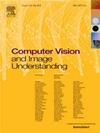FrTrGAN:在生成对抗网络中使用传输映射的频率分量进行单幅图像去雾
IF 4.3
3区 计算机科学
Q2 COMPUTER SCIENCE, ARTIFICIAL INTELLIGENCE
引用次数: 0
摘要
朦胧图像,特别是在室外场景中,由于大气颗粒的影响,能见度降低,使图像去雾成为提高视觉清晰度的关键任务。图像去雾的主要挑战是在保持精细细节和保持整体图像质量的同时准确检测和去除雾。许多现有的去雾方法与不同的雾霾条件斗争,往往损害恢复图像的结构和感知完整性。在本文中,我们介绍了FrTrGAN,这是一种利用传输图的频率分量进行单幅图像去雾的框架。这个新颖的框架通过在增强的CycleGAN架构中集成傅里叶变换来解决这些挑战。与传统的空域除雾方法不同,FrTrGAN在频域中工作,在频域中,它分离低频雾霾成分——负责模糊精细细节——并更精确地去除它们。然后应用傅里叶反变换将精炼的数据映射回空间域,确保生成的图像保持清晰度、清晰度和结构完整性。我们使用PSNR和SSIM对HSTS、SOTS Outdoor、O-Haze、I-Haze、D-Hazy、BeDDE和Dense-Haze等多个数据集进行了定量性能评估。此外,我们还纳入了基于非参考指标的结果,如FADE、SSEQ、BRISQUE和NIQE,以进一步评估去雾图像的感知质量。结果表明,FrTrGAN在有效恢复频率分量和感知图像质量的同时,显著优于现有方法。这项综合评估强调了FrTrGAN在不同雾霾条件下的鲁棒性,并强调了频域图像去雾方法的有效性,为该领域的未来发展奠定了基础。本文章由计算机程序翻译,如有差异,请以英文原文为准。
FrTrGAN: Single image dehazing using the frequency component of transmission maps in the generative adversarial network
Hazy images, particularly in outdoor scenes, have reduced visibility due to atmospheric particles, making image dehazing a critical task for enhancing visual clarity. The main challenges in image dehazing involve accurately detecting and removing haze while preserving fine details and maintaining overall image quality. Many existing dehazing methods struggle with varying haze conditions, often compromising the structural and perceptual integrity of the restored images. In this paper, we introduce FrTrGAN, a framework for single-image dehazing that leverages the frequency components of transmission maps. This novel framework addresses these challenges by integrating the Fourier Transform within an enhanced CycleGAN architecture. Unlike traditional spatial-domain dehazing methods, FrTrGAN operates in the frequency domain, where it isolates low-frequency haze components – responsible for blurring fine details – and removes them more precisely. The Inverse Fourier Transform is then applied to map the refined data back to the spatial domain, ensuring that the resulting images maintain clarity, sharpness, and structural integrity. We evaluate our method on multiple datasets, including HSTS, SOTS Outdoor, O-Haze, I-Haze, D-Hazy, BeDDE and Dense-Haze using PSNR and SSIM for quantitative performance assessment. Additionally, we include results based on non-referential metrics such as FADE, SSEQ, BRISQUE and NIQE to further evaluate the perceptual quality of the dehazed images. The results demonstrate that FrTrGAN significantly outperforms existing methods while effectively restoring both frequency components and perceptual image quality. This comprehensive evaluation highlights the robustness of FrTrGAN in diverse haze conditions and underscores the effectiveness of a frequency-domain approach to image dehazing, laying the groundwork for future advancements in the field.
求助全文
通过发布文献求助,成功后即可免费获取论文全文。
去求助
来源期刊

Computer Vision and Image Understanding
工程技术-工程:电子与电气
CiteScore
7.80
自引率
4.40%
发文量
112
审稿时长
79 days
期刊介绍:
The central focus of this journal is the computer analysis of pictorial information. Computer Vision and Image Understanding publishes papers covering all aspects of image analysis from the low-level, iconic processes of early vision to the high-level, symbolic processes of recognition and interpretation. A wide range of topics in the image understanding area is covered, including papers offering insights that differ from predominant views.
Research Areas Include:
• Theory
• Early vision
• Data structures and representations
• Shape
• Range
• Motion
• Matching and recognition
• Architecture and languages
• Vision systems
 求助内容:
求助内容: 应助结果提醒方式:
应助结果提醒方式:


